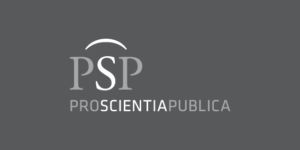Analysis of Gender and Scientific Output of Researchers in the Spanish University
DOI:
https://doi.org/10.15503/jecs2025.2.859.871Słowa kluczowe:
Spanish University, Faculty Rank, Gender Equality, Women, Scientific Productivity, h-index, m-indexAbstrakt
Aim. Promoting gender equality and excellence are key policies in academia. Therefore, in this work, we investigated scientific output and potential gender disparities of researchers across different faculty positions in the Complutense University of Madrid (UCM), the largest academic institution in Spain.
Methods. Researchers’ data were obtained from the UCM Scientific Production Portal. Full name, academic rank, affiliation, thesis defence year and SCOPUS Hirsch (h)-index was collected for each researcher. Sex (men/women) of researchers was assigned after their first names using Python programming. The m-index was computed by dividing the h-index between the length of the researcher´s career, taking in consideration the first publication. Statistical comparisons and analyses were carried out in RStudio.
Results. We found that women are clearly underrepresented in full professor positions despite being a majority in lower academic ranks. This gender disparity in full professor positions is however narrowing down in recent years. The scientific output of researches, as judged by the h-index, varied greatly between Faculties, but overall, correlated positively with the academic rank and no significant differences were detected between women and men, although exceptions were noted. Judging by the m-index, the scientific output of women and men in full professor positions were also alike.
Conclusion. There is effective equality between genders within UCM faculty ranks.
Pobrania
Bibliografia
Alonso, S., Cabrerizo, F. J., Herrera-Viedma, E., & Herrera, F. (2009). h-Index: A review focused in its variants, computation and standardization for different scientific fields. Journal of Informetrics, 3(4), 273–289. https://doi.org/10.1016/j.joi.2009.04.001
Barnett, R. C. (2004). Preface: Women and work: Where are we, where did we come from, and where are we going? Journal of Social Issues, 60(4), 667–674. https://doi.org/10.1111/j.0022-4537.2004.00378.x
Bornmann, L., Mutz, R., & Daniel, H.-D. (2008). Are there better indices for evaluation purposes than the h index? A comparison of nine different variants of the h index using data from biomedicine. Journal of the American Society for Information Science and Technology, 59(5), 830–837. https://doi.org/10.1002/asi.20806
Ceci, S. J., & Williams, W. M. (2011). Understanding current causes of women’s underrepresentation in science. Proceedings of the National Academy of Sciences, 108(8), 3157–3162.
Connell, R. W. (2005). Work/life balance, gender equity and social change. Australian Journal of Social Issues, 40(3), 369–383. https://doi.org/10.1002/j.1839-4655.2005.tb00978.x
Etzkowitz, H., Kemelgor, C., Neuschatz, M., & Uzzi, B. (1992). Athena unbound: Barriers to women in academic science and engineering. Science and Public Policy, 19(3), 157–179. https://doi.org/10.1093/spp/19.3.157
Giuliano, P. (2015). The role of women in society: From preindustrial to modern times. CESifo Economic Studies, 61(1), 33–52. https://doi.org/10.1093/cesifo/ifu019
Hechtman, L. A., Moore, N. P., Schulkey, C. E., Miklos, A. C., Calcagno, A. M., Aragon, R., & Greenberg, J. H. (2018). NIH funding longevity by gender. Proceedings of the National Academy of Sciences, 115(31), 7943–7948.
Hirsch, J. E. (2005). An index to quantify an individual’s scientific research output. Proceedings of the National Academy of Sciences, 102(46), 16569–16572.
Holm, S. (1979). A simple sequentially rejective multiple test procedure. Scandinavian Journal of Statistics, 6(2), 65–70. http://www.jstor.org/stable/4615733
Moss-Racusin, C. A., Dovidio, J. F., Brescoll, V. L., Graham, M. J., & Handelsman, J. (2012). Science faculty’s subtle gender biases favor male students. Proceedings of the National Academy of Sciences, 109(41), 16474–16479.
Ndwandwe, M., Bishop, D. G., Wise, R., & Rodseth, R. (2021). Bibliometrics to assess the productivity and impact of medical research. South African Journal of Higher Education, 35(4), 224–236.
Roper, R. L. (2019). Does gender bias still affect women in science? Microbiology and Molecular Biology Reviews, 83(3), Article e00018-19.
Sánchez-Jiménez, R., Botezan, I., Barrasa-Rodríguez, J., Suárez-Figueroa, M. C., & Blázquez-Ochando, M. (2023). Gender imbalance in doctoral education: an analysis of the Spanish university system (1977–2021). Scientometrics, 128(4), 2577–2599.
Schiebinger, L. (1987). The history and philosophy of women in science: A review essay. Signs, 12(2), 305–332. http://www.jstor.org/stable/3173988
Tomassini, C. (2021). Gender gaps in science: systematic review of the main explanations and research agenda. Education in the Knowledge Society (EKS), 22(SE-Artículos). https://doi.org/10.14201/eks.25437
von Bohlen und Halbach, O. (2011). How to judge a book by its cover? How useful are bibliometric indices for the evaluation of “scientific quality” or “scientific productivity”? Annals of Anatomy - Anatomischer Anzeiger, 193(3), 191–196. https://doi.org/10.1016/j.aanat.2011.03.011
Wickham, H. (2016). ggplot2: Elegant graphics for data analysis. Springer-Verlag New York.
Wieczorek-Szymańska, A. (2020). Gender diversity in academic sector—Case study. Administrative Sciences, 10(3), Article 41.
Pobrania
Opublikowane
Numer
Dział
Licencja
Prawa autorskie (c) 2025 Alvaro Ras-Carmona, Esther M. Lafuente, Pedro A. Reche

Utwór dostępny jest na licencji Creative Commons Uznanie autorstwa 4.0 Międzynarodowe.
CC-BY
Authors retain copyright and grant the journal right of first publication with the work simultaneously licensed under a Creative Commons Attribution License that allows others to share the work with an acknowledgement of the work's authorship and initial publication in this journal. All authors agree for publishing their email adresses, affiliations and short bio statements with their articles during the submission process.


